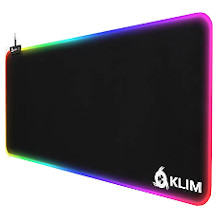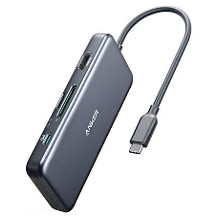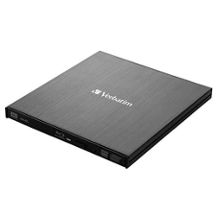Webcam purchasing advice: how to choose the right product
- The most important things in a nutshell
- There are specially designed webcams for conferences, business meetings or Skype phone calls.
- Classic webcams are connected via a USB cable, network cameras connect to the PC and internet via WLAN.
- In addition to image and video quality, the decision criteria also include the connection and mounting options of the webcam.
- If the quality of the integrated microphone is insufficient, it is possible to attach an external microphone.
- In order to optimise the quality of the video streams, additional features such as a swivel function, autofocus or face tracking are used.
Webcams: Face-to-face long-distance calls
If you are in a long-distance relationship, have just sent your child off to university or travel abroad a lot yourself, you may no longer be satisfied with a phone call to keep in touch with your loved ones. With a webcam, friends and families can chat face-to-face with their interlocutors around the globe, keeping them close despite the physical distance. Unlike a mere camera, the compact recording devices for notebooks and desktop PCs can not only take photos and videos, but also make images available in real time. With a livecam, users share their recordings worldwide with entire internet communities. To do this, they are usually connected to the PC via a USB port or, in the case of newer models, via WLAN. In order to transmit sound without the aid of an external microphone or even a headset, a microphone is usually already integrated.
In our increasingly networked society, video telephony now takes place via a wide variety of channels, from Skype to Facebook to Snapchat. Gamers who want to publish their Let’s Play videos on YouTube or livestreams via platforms like “twicht.tv” have also become a dominant target group for webcam manufacturers. The digital mini-cameras even hold their own as surveillance cameras. However, webcams are not only for private pleasure, but can also be used in a business environment – for example, to hold video conferences.

Manufacturers and prices for occasional users and permanent chatters
Skype and Co. have become an integral part of everyday life for many Internet users. At the moment, Logitech and Microsoft dominate the world of webcam brands. These are now available for every budget – from bargain to high-end devices, making them widespread and popular. Since the acquisition costs for models with a greater wealth of functions quickly go up, consumers should consider which features are important to them before buying. Inexpensive SD cameras, for example, are available for as little as 15 euros. More demanding video chatters, on the other hand, have to spend at least 40 euros for a high-quality webcam with HD-Ready or Full HD resolution. Professional devices in 4K quality even go for prices starting at 200 euros over the counter.
Sharper, better sounding, more functions: the added value of an external webcam
For many consumers, the purchase of an external webcam seems superfluous because their laptops (as well as their mobile devices) usually already have a camera integrated. These are slightly hidden above the screen. So why is the additional purchase of a webcam worthwhile? For one thing, the built-in mini-cameras are not inherently of superior quality. External cameras, on the other hand, often have a much better resolution even in a low price range. In addition, they offer a wider field of view and higher image sharpness. On the other hand, they are flexible in terms of their setup, whereas the integrated camera and the smartphone or laptop form an inseparable unit.
Despite all the advantages, however, the negative sides of the so-called cam chat culture must not be disregarded. For example, optimal transmission only works in the case of a good network connection; otherwise, jerky images and interruptions are the result. In addition, it is possible to be spied on in the course of a webcam hack.
Advantages
- Better picture, video and sound quality
- Wider image detail
- Higher image sharpness
- Flexibility in terms of set-up
Disadvantages
- Optimal transmission only with a good network connection
- Danger of hacker attack
From resolution to mounting: the most important buying criteria
Although a user who wants to use his webcam as a surveillance camera has different requirements for his ideal model than, say, a company that wants to hold video conferences, there are certain criteria that are relevant for all consumers. To give interested parties an overview of what is important when buying a webcam, we list and explain the most important factors, from image or video and sound quality to connection options and installation.
Image and video resolution: Bandwidth, light impact and frames per second
The resolution is often used by manufacturers as a lure that should not blind users. Although it is decisive for the sharpness and thus the quality of an image, numerous other factors also play a role.
HD-Ready, Full-HD or 4K?
The cheapest webcams on the market have a resolution of 640 x 480 pixels. Since this quality is just good enough to avoid pixelated images, it should never be undercut; even better, of course, would be razor-sharp images.
The Full HD resolution of 1,920 x 1,080 pixels, with its particularly good image representation, is mainly used in the professional sector or by gamers. Alternatively, consumers can opt for a lower resolution of 1,280 x 720 pixels, i.e. HD Ready. The highest possible resolution is particularly important for the purchase decision if the webcam is used regularly or professionally. For full-screen recordings during a video call, Full HD is also more pleasant for the conversation partner because the image is sharper, which ensures a more realistic conversation. After all, the lower the resolution of the camera used, the grainier the image for the chat partner. Although there are also webcams with a 4K resolution, which strictly speaking actually means the UHD resolution of 3,840 x 2,160 pixels, these tend to be in the upper price segment. In addition, the higher resolutions require a higher data transmission.

The connection between internet connection and image resolution
Although there are many different reasons why the media stream transmitted by the cam is jerky, in most cases the user’s internet connection is responsible. The quality of the live stream is largely dependent on the speed of the internet connection. It is not the download speed that is relevant here, but the upload speed. The data rate is given in kilobits per second (kbit/s) or megabits per second (Mbit/s).
The amount of data required for the stream also depends on the resolution set. The following applies here: The higher the resolution, the higher the transferred data volume of the current stream. The internet connection should therefore be able to transfer correspondingly large amounts of data in order to display the pixels with good picture quality and sharpness even in motion. Content in which there is hardly any movement requires a lower data rate than, for example, the transmission of a football match or a stage show. The following table gives an overview of which data rate is required for which video quality:
| Resolution | Data rate | Pixel |
| nHD | 1.000 kbit/s | 640 by 360 pixels |
| HD-Ready | 2,000 to 3,000 kbps | 1,280 by 720 pixels |
| Full-HD | 5.000 kbit/s | 1,920 by 1,080 pixels |
Resolutions that go beyond Full HD are generally not recommended. If the streamer’s upload is too low, it cannot stream in the quality it wants. This means, for example, that he has a Full HD cam, but can stream in SD at most due to his connection. If the receiver’s internet speed is too low so that it receives the HD stream but its connection cannot keep up with the data volumes, loading times repeatedly interrupt the stream so that it no longer runs synchronously. While 500 kbit/s are recommended for a video call in SD, at least 1,500 kbit/s are required for video calls in HD-Ready. For a Skype call in HD quality, for example, 1,200 kbit/s are required. The connection capacity always also depends on the location and the number of end devices in the immediate vicinity. A speed test is one way to measure the speed of the internet connection.
Try out the webcam online in advance
In order to test the functionality of the webcam without a conversation partner, there are various websites that allow you to try it out. As a rule, all you need to do is click a button. If the webcam transmission appears on the screen, this usually means that the camera is working. If no image appears, users receive information about possible causes. In addition to the video, the functioning of the microphone can often be checked.
Light and its influence on picture quality
If users also want to use the snapshot function or take pictures in video chat, the photo resolution should be as high as possible in addition to the video resolution. Depending on the model, this is between 0.9 and 15 megapixels; at least three megapixels are required for a good picture.
The illumination also has a great influence on the picture quality. Basically, the video quality always depends on the lighting conditions at the location. Although the ISO values provide information about how light-sensitive the camera is, these are rarely specified in the data sheet.
In the same context, in addition to the sensor, which picks up and processes the incident light through the lens, the lens is also an aspect that should not be underestimated, as it images the picture on the sensor and is thus responsible for the quality of the transmitted image, especially for the exposure and colour intensity. If more light can enter, the camera can cope better with unfavourable lighting conditions. Furthermore, there are clear differences between a cheaper plastic lens and a high-quality glass lens, where the images appear sharper and more colourful. For gamers, however, who often only occupy a small section in the corner of the screen, a high-quality lens is not relevant.
Resolution in relation to frame rate
Finally, the number of pictures a webcam can take in one second is also crucial for good picture quality. After all, it is no use if the camera delivers an optimal resolution but the picture does not run smoothly because the frame rate is not high enough. In order to transmit a smooth image and not choppy frames, the webcam should be able to record at least 24 frames per second (24 fps). Most webcams offer at least 30 fps. At a rate of 60 frames per second, webcams even allow slow-motion recording without visible loss of quality.
The sound quality of the integrated microphone
Apart from photo and video quality, sound quality also plays an important role when buying a webcam. As a rule, however, there is hardly any detailed technical information on this. Although most webcam microphones still only record mono sound quality, high-quality models are now also capable of recording stereo sound. Ultimately, the relevance of the sound quality for each user depends on how intensively the microphone is used.
For video calls in a private environment, for example, the internal microphone is completely sufficient. Those who use the webcam more for monitoring their own four walls are also not necessarily dependent on the presence of a microphone. An exception is the use as a baby monitor, where a microphone is advisable, but its quality is of secondary importance. Gamers should opt for high-quality external microphones that offer much better recording quality. For clear and powerful voice recordings in the professional field, which can be clearly understood during live streams or conferences, it is worth investing in a separate microphone. For example, the internal microphone is completely sufficient for video calls in a private environment. Those who use the webcam more for monitoring their own four walls are also not necessarily dependent on the presence of a microphone. An exception is the use as a baby monitor, where a microphone is advisable, but its quality is of secondary importance. Gamers should opt for high-quality external microphones that offer much better recording quality. For clear and powerful voice recordings in the professional field, which can be clearly understood during live streams or conferences, it is worth investing in a separate microphone.
Depending on the application group, the built-in microphone performs sufficiently well that users do not necessarily need to purchase an additional device. To ensure that spoken words reach the other party clearly and without annoying background noise, most microphones are equipped with digital noise reduction, which detects ambient noise and isolates it from the voice. In this way, the voice of the person you are talking to comes clearly to the fore.
Headsets: Conversations directly to the ear
Headsets offer an inexpensive and compact alternative to external microphones. The sound output boxes sit directly and isolated on the user’s ears, so that no feedback can occur with the incoming sound of the conversation partner and the user’s own microphone. Otherwise, the conversation partner may hear his or her own words echoed in the chat window. The Logitech QuickCam, for example, comes with a headset in addition to the webcam.
USB as standard: connection and software
In order for consumers to be able to use the webcam, they must be able to connect it to the computer. In general, it is therefore important to ensure that the PC has sufficient connections. All common webcams are connected by default via a USB cable to transmit image and sound. Less expensive models also have a 3.5-millimetre jack plug for connecting the microphone. Most webcams also draw their power from the USB connection; only rarely do they have their own power supply unit to plug into the socket. Moreover, since comparatively large amounts of data are transmitted during video calls, USB technology is faster and more stable than its wireless alternatives. Although wireless models do not contribute as much to the usual tangle of cables that can be found wherever many electrical devices are placed together, they do need other power sources such as batteries or charging stations.
In addition to the connection options, compatibility with the PC’s operating system is also a decisive factor in the purchase decision. For example, there are devices that are not compatible with an Apple operating system. With most devices, the driver is installed automatically (via “plug and play”).
Mounting: Stands, clamps and co.
The webcams need a mount to be able to attach them to the end device, usually to the edge of the screen. There are various possibilities for this: Usually, a universal mount is already included in the delivery. If this is too tight or slips too easily, it is possible to purchase a more suitable holder. This can be, for example, a stand or a clamp that can be attached to any frame. While the former requires considerably more space, it is important with the latter that the viewing angle can be adjusted continuously so that the camera captures the face, for example, at the most favourable angle. Ideally, interested parties should measure their laptop or PC before purchasing a mount and check whether it is suitable for the respective type of mounting. An important point is, of course, the length of the USB cable, as this is a decisive factor in determining the installation location.
Some models have an integrated thread for camera tripods. Since these are standardised, it is usually no problem to attach the webcam in order to set it up flexibly in the room. In this case, however, more space is required than for attachment to the PC.
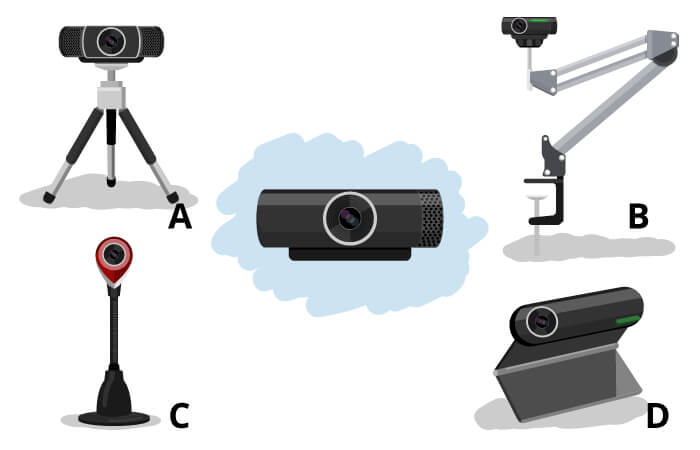
Special features to optimise streaming quality
Some manufacturers offer more or less useful additional features for their webcams that help to produce images and videos in the best possible quality. But what other special features and special functions are there in webcams and which are useful for different types of users?

Extended radius of action thanks to motorised pan, tilt and zoom function.
The recording window of webcams ranges from a tight image of the face to capturing a large space. A wide image area is worthwhile for security cameras, for example, but also conference webcams. With a zoom, the cameras reduce the field of view so that the image has a narrower angle, or the lens zooms in on the filmed object and enlarges it on the screen. Webcams with automatic pan, tilt and zoom functions, such as the Logitech PTZ Pro 2, are particularly practical. Usually, the possible pan angle is between 140 and 260 degrees, the tilt function between 60 and 130 degrees; ideally, the housing can even be rotated or tilted through 360 degrees.
Increased security thanks to face recognition
Some surveillance webcams recognise faces and inform users when they register unknown faces. This means that the system warns users directly when it detects an intruder and immediately sends them a photo or video. Companies use such systems to control access to their premises, for example. Parents, on the other hand, can see directly if one of their children enters or leaves the house while they are out. Usually, however, webcams use facial recognition primarily to recognise faces in a scene, to focus on them and to follow their movements, such as the LifeCam Studio from Microsoft does.
Always in focus thanks to face tracking
In addition to face recognition, most models are now equipped with a face tracking function. This detects faces by recognising skin tone, shape and movement and automatically follows them with the help of vertical and horizontal camera pans or by zooming in and out, so that they always remain in focus even during movement. Thanks to the motorised arm, users do not have to use their hands or a remote control to let the camera follow their face – the camera automatically ensures that the face always remains in the centre of the captured image area. If this feature is not included in the delivery, the webcams can usually be upgraded later. The free software is available for download.
More sharpness thanks to autofocus
Autofocus ensures that the image is focused automatically, because webcam users rarely sit completely still in front of the lens, but move around when gesticulating, for example. Whereas the so-called single autofocus focuses on an object and remains in focus at this point even if the object moves forwards or backwards away from the fixed point, the continuous autofocus focuses on an object (in the centre), tracks it and readjusts its focus if it moves. However, the latter is only necessary if the webcam is used in a professional setting. Less expensive webcams usually do not have an autofocus. The more movement there is in front of the lens, the better the focusing should be to keep the image sharp. For regular webcam users and gamers, the investment in this additional setting is therefore more worthwhile than for occasional video callers.
Image stabiliser prevents camera shake
An image stabiliser ensures stable and smooth, i.e. unblurred, videos even at high speeds or extreme movements. To ensure that the picture quality always remains detailed and sharp, built-in motion sensors measure horizontal and vertical vibrations. A processor then calculates how much these must be compensated for by the moving lens element in the lens in order to counteract them accordingly.
Everything in view thanks to wide-angle lens
A normal wide-angle lens has a focal length of between 24 and 25 millimetres. Here, the smaller the millimetre of the focal length, the wider the angle. With a wide-angle webcam like the Logitech C930e, users can see everyone in the room during video conferences, for example. In addition, these lenses convey a sense of width and depth, making rooms appear larger. Users who use the webcam in a private environment, on the other hand, could do without the wide-angle lens.
Optimal exposure thanks to automatic regulation
Thanks to automatic detection and adjustment to lighting conditions, users no longer have to worry about regulating their camera themselves. This technology, which Logitech calls RightLight, for example, improves image quality in changing light conditions or poorly lit rooms by adjusting the frame rate and exposure as needed.
Well illuminated thanks to adjustable LEDs
Webcams would be largely unusable in the dark without additional light sources. To illuminate their surroundings directly, some models therefore have LEDs. While some models are only equipped with a single light-emitting diode, others have several lights on each side. This means that it is no longer necessary to switch on an external light source to take pictures with the webcam. LEDs have low power consumption and are comparatively inexpensive – especially since the light only switches on automatically if the room is not sufficiently illuminated. The amount of light can be regulated or dimmed (steplessly) as needed for optimal illumination. In addition to the number of LEDs, users should also pay attention to their colour: Although cold light is brighter, warm white light is easier on the eyes.
For private, professional or playful use: an overview of webcam types
Since webcams are versatile, they can be divided into different categories. According to the variety of their uses, they also differ in terms of their technical features. So which webcam is suitable for which purpose?
Webcams for video telephony
The commercially available USB webcams for video calls via Skype and Co. can be roughly divided into four categories:
Simple webcams: For occasional use
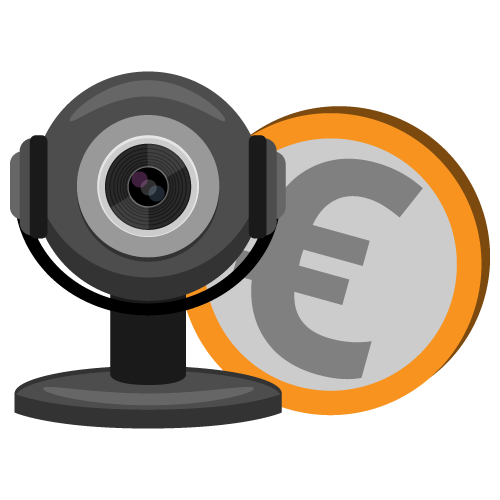
For beginners or all those who only rarely video chat, a simple standard version is sufficient. An inexpensive camera with a low resolution is also a good choice if the internet connection is comparatively slow. The relatively inexpensive standard webcams are sparse in their features. With a common resolution of 640 by 480 pixels, they are not designed for high-quality recordings. Those who nevertheless attach some importance to an attractive appearance and clean sound should make sure that they at least have automatic exposure adjustment and noise suppression to optimise the lighting conditions and filter out disturbing background noise.
HD webcams: For regular use
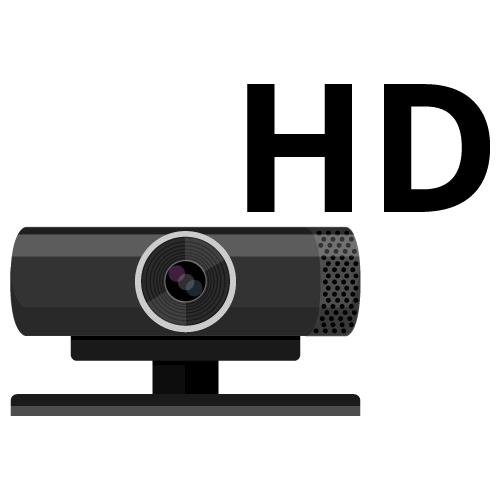
HD cameras produce sharp, detailed images. With a resolution of at least 1,280 by 720 pixels, they also meet higher demands. HD-ready cameras are not only suitable for business use, but also for more intensive use in private video calls, as the high-resolution format shows much more detail. The Full HD format with a resolution of 1,920 by 1,080 pixels delivers even more detailed images. However, this requires a fast internet connection. Since full HD webcams are more expensive, consumers should weigh up whether this expense pays off in terms of their usage behaviour. The HD Ready standard often already used in laptop mini cameras is sufficient for most users for Skyping. In order to establish as personal a relationship as possible with the Let’s players, so-called facecams are often used, which primarily record the upper body or face of the streamer.
Conference webcams: For professional use

Especially in the business world, it is important to create a serious, professional impression on the other person. In order to convey one’s own person or presentation as well as possible – for example for a meeting from the home office – a high-quality camera with professional features is necessary. Conference webcams are specially designed for professional use with their high resolution or image quality (at least HD standard), their hands-free facility and their wide-angle or zoom function. With the help of the flexible pan, tilt and zoom mechanism, it is possible to capture a wide radius or to let the image section slide across the conference table. In addition, conference systems can often be operated via Bluetooth or NFC and are equipped with a high-quality microphone including echo suppression and noise isolation as well as numerous additional functions such as auto-focus or automatic light adjustment.
Network cameras: indoor and outdoor surveillance thanks to WLAN connection
IP webcams that are connected to a network are basically divided into indoor and outdoor versions.
IP or WLAN webcams for indoor use
IP webcams, also called network cameras, Wi-Fi webcams or Wifi cameras, are wireless cameras that can connect to a network. Since they are connected to the (home) network, the permanent use of a computer is no longer necessary. IP cams have either a battery or other power supply. Because they are connected to the network, other devices that are logged into the same network can connect to the camera and view the images. Remotely controllable, they are even suitable as surveillance cameras. This means that users always have an overview of who is currently in their house or on their property. They can also be used as baby cams. For surveillance purposes, they are usually motorised; they also have a night vision function, a microphone and motion detection. All IP webcams are connected to the internet either via WLAN or via a network cable. Via the software, users can also have e-mail notifications sent to them when a person enters the area monitored by the camera. Parents can also use this type of webcam as a baby cam to keep an eye on their offspring.
Outdoor webcams for outdoor video surveillance
Unlike IP webcams, which are primarily designed for indoor use, weatherproof outdoor IP webcams serve as surveillance cameras for outdoor use. Accordingly, the cameras should have a protection rating of at least IP66, which guarantees dust-tightness and protection against high-pressure jets of water. For example, they create images of sights that can be viewed on the Internet. Thanks to an integrated microphone or loudspeaker, they also transmit sound and via infrared LEDs they even ensure image transmission in the dark. The only problem may be the power supply, as there may be a lack of sockets outdoors.
Important notes on the use of webcams
When using their webcam, users should consider one or two aspects in order to achieve optimal results with which both they themselves and the recipients of their recordings can be completely satisfied. So what is important when using a webcam?
Protect the webcam from unauthorised access
Since a webcam always provides an insight into the personal living space of the user, it is not impossible for this to be exploited. For example, hackers could gain access to the webcam remotely and threaten to publish footage in order to blackmail the user. Of course, these attacks are illegal, but in fact they are rarely punished because very few users even notice that they have been the victim of a hacker attack. Usually, access is gained via a programme or app that users install unknowingly. Special care must be taken with WLAN and Bluetooth devices, as these are particularly vulnerable to hackers. If the network is well secured, the probability of access decreases. But what protective measures can users take to prevent their webcam from being hijacked?
- As a matter of principle, do not download any programmes from unknown or even dubious sources.
- Always keep the operating system or the webcam driver up to date with regular updates.
- Install an up-to-date anti-virus programme.
- Secure the webcam with a password.
- Uninstall the webcam when it is not needed.
- Put a strip of opaque tape on the lens to cover it.
- Look for the indicator light that shows whether the camera is currently active.
In general, it is safer to use an external webcam, where users simply unplug it to unhook it. A model with a separate on/off button that makes it possible to switch off the webcam at any time is also a good choice here. A cap or a lockable lens also protects against unauthorised access.
Webcam recordings in public spaces
When using a webcam, there are not only safety aspects to consider, but also legal principles. Are webcam recordings allowed in public at all? After all, users must observe personal rights when recording people. In Germany, for example, it is forbidden under §22 of the German Art Copyright Act (KUG) to post recordings of people on the internet without their consent. If, in public spaces, mainly the surroundings (streams from public places) or the weather (weather cams) are depicted, while persons are only shown as accessories, the use does not pose a problem according to §23 KUG. An installation of the camera that puts individual persons in the foreground, for example by facetracking or a zoom, on the other hand, is not permitted. An exception is private surveillance cameras, which sometimes also record the pavement or the street in front of one’s own house. In this case, according to §6 of the Federal Data Protection Act, it is only necessary to display a clearly visible sign indicating that the area is under video surveillance. If the webcam also covers part of the neighbouring property, the neighbours must also be asked for permission.

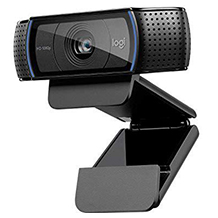
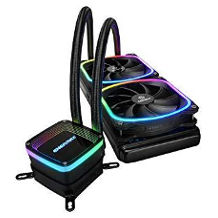

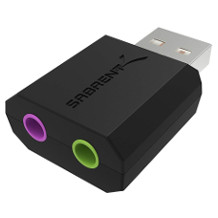

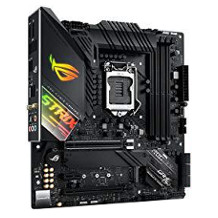
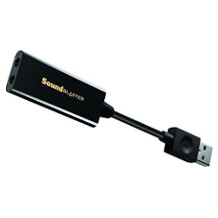
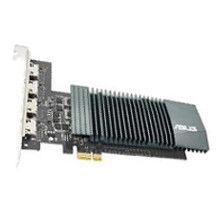
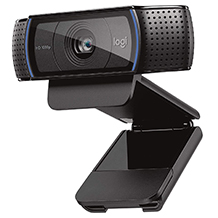

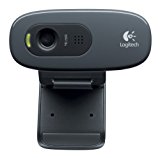

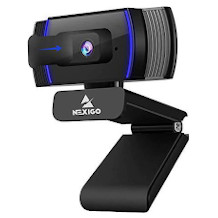



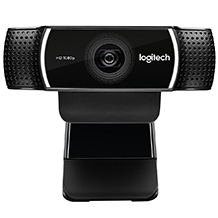

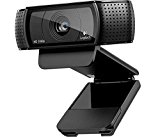



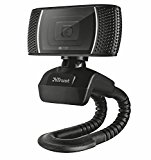
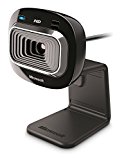

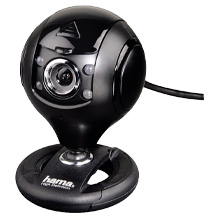


 9,206 reviews
9,206 reviews



